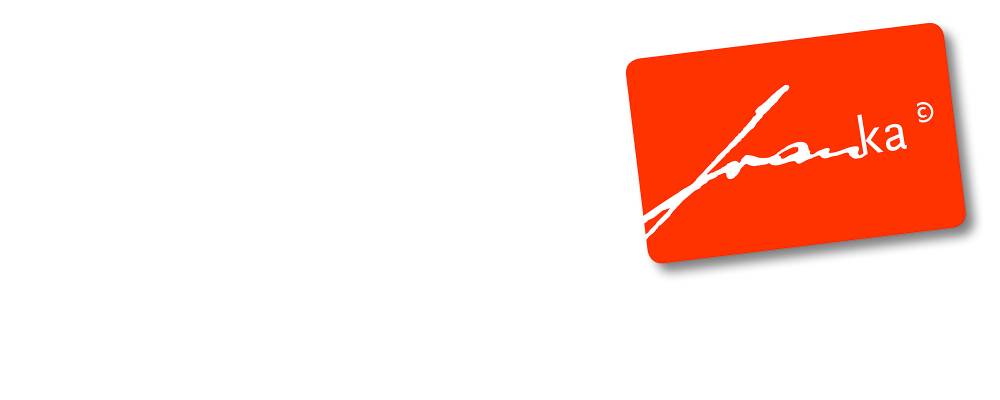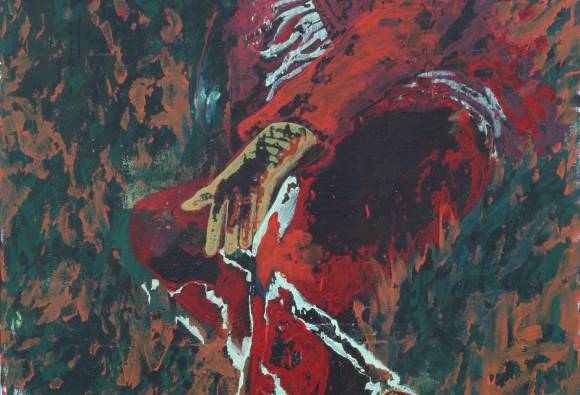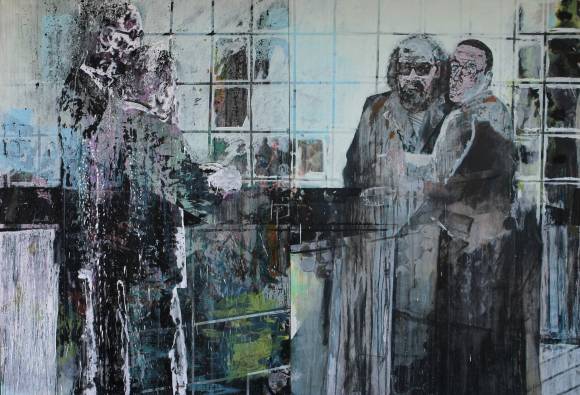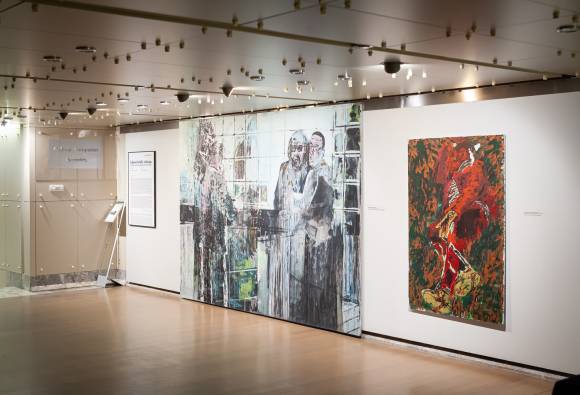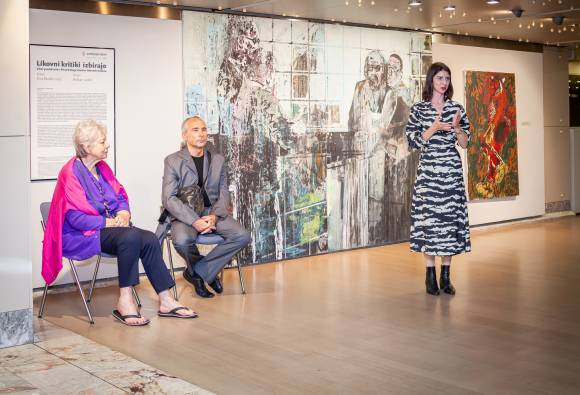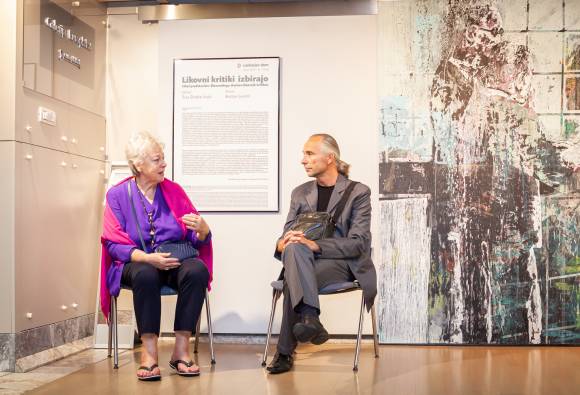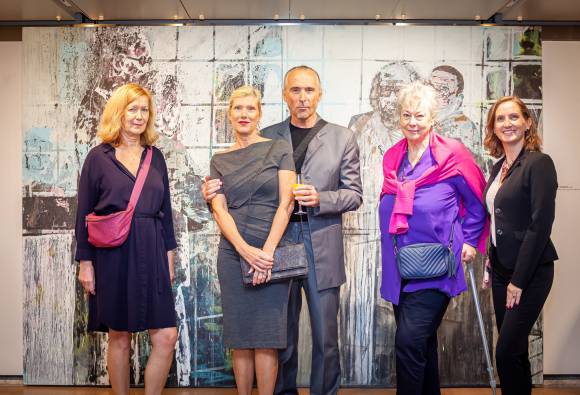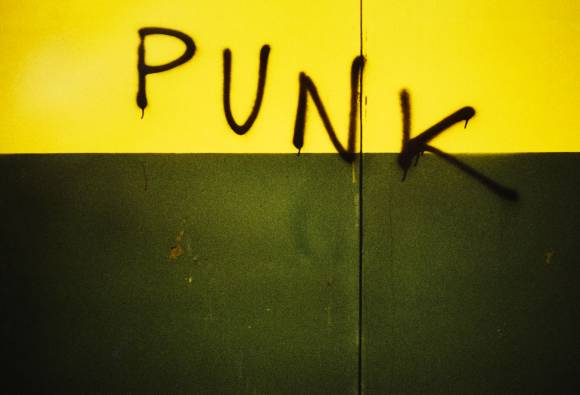
Boštjan Jurečič
Art Critics Choice - Slovenian Fine Arts Society series of showcases
Selector: Živa Škodlar Vujić
Boštjan Jurečič Alluvio, born in 1969 in Ljubljana, obtained a BA from the Faculty of Economics in Ljubljana in 1991, then studied painting at the Academy of Fine Arts and graduated under Professor Gustav Gnamuš in 1998. He works as a journalist on TV Slovenia’s cultural programme editorial board. In his painting practice, Alluvio explores the wide field of contemporary figurative language. He has exhibited regularly at home and abroad since 2000. He is involved in art theory and has developed a theory on parallels and a theory on parallels between visual art and music. In 2020, Cambridge Scholars published his book A Study of the Parallels between Visual Art and Music.
Živa Škodlar Vujić is an art historian, curator of the International Biennial of Graphic Arts until 1988, a gallerist and publicist. Journalist for the cultural section of Delo daily, editor of the supplement Najdihojca between 1962 and 1964. One-month study programme at the Rive Castleman's Graphic Arts Department, MOMA in New York in 1975; following an invitation from the US Department of Culture, a one-month professional trip with visits and talks at American art academies, graphic workshops and studios of the most famous artists in New York, San Francisco, Chicago, Houston and Los Angeles in 1980; following an invitation from the South Korean government, Seoul, selector for South Korean graphic art, later presented with a solo exhibition at the International Biennial of Graphic Art in Ljubljana; that same year guest of the Tokyo Museum of Modern Art of Japan, before the opening of their new annex, Tokyo, 1982; member of the jury of the Italian Graphic Arts Exhibition Lecce, 1983; selector of Canadian graphic art on the jury of the annual exhibition Canadian Graphic Arts 1985, selection presented at the International Biennial of Graphic Art in Ljubljana. On the occasion of the anniversary 15th International Biennial of Graphic Art in 1985, she organized and curated three accompanying exhibitions: Jasper Johns, Monotypes at the Small Gallery, an exhibition by Joan Miro at Cankarjev dom and 100 Prints by Henry Moore in the Ljubljana City Gallery, which she also presented in Skopje, in the Hamam Museum Space. In the nineties, she curated and presented several one-man exhibitions on the premises of SKB, Ljubljana: Avgust Černigoj, Zoran Mušič, David Tremlett, Lojze Spacal, Valerio Adami, Henry Moore and Joe Tilson.
As a gallerist and publisher of original graphic art, she works with her husband Lazar Laz Vujić as an ideator and organizer of exhibitions at international art fairs in Bologna, Chicago, New York, Madrid, Basel, Frankfurt, Zurich and Paris presenting Slovenian artists Gabrijel Stupica, Zoran Mušič, Milena Usenik, Boris Zaplatil, Boris Jesih, Živko Marušič, Matjaž Počivavšek and the Irwin group; at the Visconti Fine Art Gallery curates exhibitions and issues exhibition catalogues by notable artists, including Robert Rauschenberg, James Rosenquist, Jasper Johns, Tom Wesselmann, David Tremlett, Jiří Kolář, James Brown, Samo Francis, Salvador Dali, Mimmo Rotella, Mimmo Paladin, Solo Lewitt, Joan Miro, Pablo Picasso, Kiki Smith, Gabrijel Stupica, Živko Marušič, the IRWIN group, Zoran Mušič, Dušan Džamonja, Vladimir Veličković, Velimir Ilišević, Milan Zoričić, Boštjan Jurečič Vega/Alluvia and others.
Tempus fugit or erasure of time...
More than ten years ago, before your first exhibition in our gallery, we were in your studio browsing through your current output. Thrilled by the visual experience of the singularity of your artistic world, as well as a completely new approach to figurative painting, a thought crossed my mind which I believe still holds true: Your art is a felicitous and productive blend of your everyday life: a painter at heart, a vocation as an artist, and a journalist by profession, you have recreated in your paintings – sequenced as cinematic scenes and reworked from news photographs – a completely unique, idiosyncratic art world. With your accidental technical invention of washing out paint from the canvas (fortunately, acrylic paints today allow for such a procedure), you have invested the pictures with an additional, pronounced thematic and emotional element: Tempus fugit – events, protagonists and existence in your paintings crumble under the weight of time. I would like to know whether you have been developing this approach in painting deliberately for the last ten years, and how and why you have progressed into a new era of figurative painting and new colour explorations. In your own words, adopting Rothko's colour palette?
The approach, of course, is deliberate. I have always been interested in figuration, but it became clear to me very early on that figuration quickly slips into illustration (and abstraction into decorativeness) so I was searching for ways to avoid illustration in my figuration. This dilution of images happened by accident – I rinsed one of the smaller still wet paintings with water in 2004, which partially washed out the image: What remained of the image completely overwhelmed me, and rinsing suddenly seemed like a completely new, original technique, perhaps leading to interesting results. I then tried out the technique in all possible modalities, very carefully at the beginning, but later I added more and more colours to the almost achromatic base and also worked on the depth of the structures. It was clear to me very early on that every idea quickly drains itself of form and content – it turns into a kind of mannerism, thus losing strength and intensity. So I introduced new elements: there are several glazes in the paintings from the post-2014 period, where I tried to achieve the effects of radiant light. The images became brighter, their colours more intense. However, it was still very much grounded in the black and white contrast, even though my work had never been tonally structured. I have always felt a strong affinity with Rothko as a painter, and at some point I became interested in how to transfer the structural logic of his painting to the realm of figurative art.
You are the author of a study on parallels between visual art and music; Your new painting period, the researching and delving into Rothko's abstract world of nuanced and stratified colour tones, seems to somehow coincide with your exploration of sensitive visual perception of abstract painting, which could sometimes, especially with Rothko, be compared to beautiful chords. Could you explain your painting endeavours in more detail, especially the translation of this colour system into figuration?
Rothko’s style is – roughly speaking – about juxtaposing blocks of different colour values, but of the same brightness. When I sought to consistently translate this colour logic into my figuration, I first ran up against a blank wall, because everything on the canvas just turned dark and almost everything was imperceptible. Then I noticed that Rothko was not radical either, and understood that radicalism did not actually make sense in art. So I also introduced some light differentials, which actually somehow even strengthen the remaining structures – that is, hard Rothkoesque ones. In general, it boiled down to two things: there is only a limited set of colour values with which such painting is even possible, but on the other hand, there has been no need to paint many details, they are invisible anyway due to disparities in colour. Let me stress that I have no intention of becoming the next Rothko, I only borrowed from his style and transplanted it into my painting with a view to reviving it.
For your first public shows you used the artistic name Vega; now you have changed it to Alluvio; The name, of course, carries a symbolic meaning and perhaps also gives a sign to a viewer who wants to understand your work more profoundly, so I am interested in your interpretation.
Alluvio comes from Alluviana. It was supposedly the name the Romans used for the Ljubljanica River. A flooding river. I was looking for a simple name that would also express where I came from and how I do what I do. Alluvio communicates both.
Boštjan Jurečič Alluvio interviewed by Živa Škodlar Vujić
